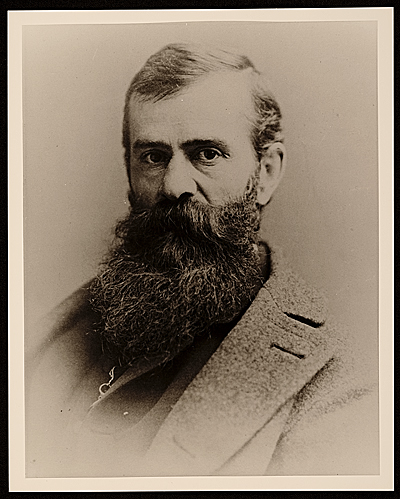JERVIS MCENTEE
1828-1891 Second generation Hudson River School landscape painter Jervis McEntee was born in Rondout, New York in 1828. He was named for John Jervis, the famous chief engineer of the Erie Canal, for whom his father had worked. McEntee studied with Frederic Church in New York from 1850 to 1851. About 1858 McEntee hired English architect Calvert Vaux to build a studio and home for himself and his wife next to his father’s house in Rondout. He also kept a studio in the Tenth Street Studio Building in New York City. Throughout his career McEntee left New York early each spring to embark on sketching trips and spend time with his family. The artist traveled to upstate New York, Maine, Long Island, Virginia, Nevada, and Mexico. He often traveled in the company of other artists such as Frederic Church, Sanford Robinson Gifford, Eastman Johnson, John Ferguson Weir, and Worthington Whittredge. He returned to the city each November or December and spent the winter months in his Tenth Street studio turning his sketches into full-size paintings. McEntee served in the Union Army during the Civil War. In 1868 he travelled and painted in Europe.
Second generation Hudson River School landscape painter Jervis McEntee was born in Rondout, New York in 1828. He was named for John Jervis, the famous chief engineer of the Erie Canal, for whom his father had worked. McEntee studied with Frederic Church in New York from 1850 to 1851. About 1858 McEntee hired English architect Calvert Vaux to build a studio and home for himself and his wife next to his father’s house in Rondout. He also kept a studio in the Tenth Street Studio Building in New York City. Throughout his career McEntee left New York early each spring to embark on sketching trips and spend time with his family. The artist traveled to upstate New York, Maine, Long Island, Virginia, Nevada, and Mexico. He often traveled in the company of other artists such as Frederic Church, Sanford Robinson Gifford, Eastman Johnson, John Ferguson Weir, and Worthington Whittredge. He returned to the city each November or December and spent the winter months in his Tenth Street studio turning his sketches into full-size paintings. McEntee served in the Union Army during the Civil War. In 1868 he travelled and painted in Europe.
He was a member of the National Academy of Design and the Century Club, and exhibited at the Royal Academy in London; the Paris Exposition of 1867; the Boston Art Club; the Brooklyn Art Association; the Boston Athenaeum; and the Pennsylvania Academy of the Fine Arts. His works are held among the collections of: the Detroit Institute of Arts; the Metropolitan Museum of Art; the National Gallery of Art; the Smithsonian Archives of American Art; the Bowdoin College Museum of Art; the Brooklyn Museum of Art; the Clay Center for the Arts and Sciences; the Cleveland Museum of Art; the Corcoran Gallery; the Farnsworth Art Museum; the Harvard University Art Museums; the New York Historical Society; the Peabody Institute; the Samuel Dorsky Museum of Art; and the Newark Museum. The artist died in Rondout in 1891. McEntee’s Diary, which he kept meticulously from 1872 to 1890, chronicled the American art world of the period and provides a window into the lives of leading artists of the 19th Century. In 1874 he wrote: “Perhaps what would mark my work among that of my brother artists is a preference for the soberer phases of Nature, the gray days of November and its leafless trees as well as the Winter landscape.”
